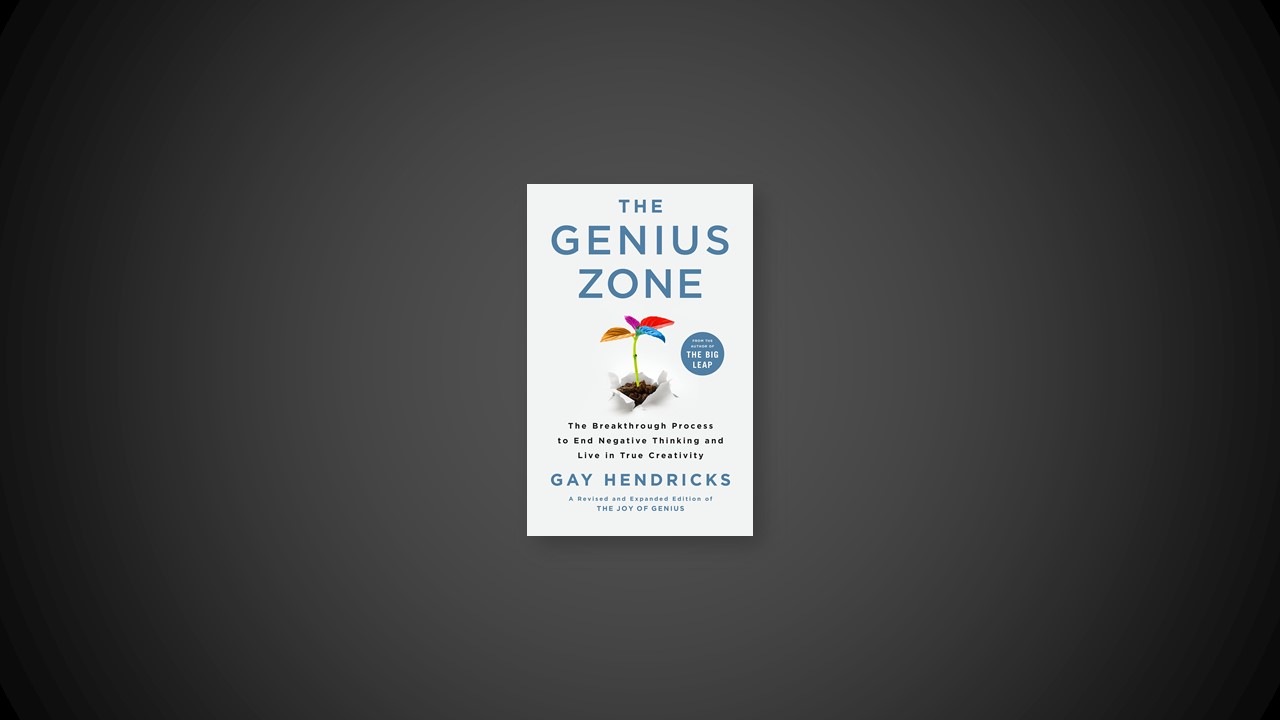The Essential First Step
If you embrace the ideas in the book and follow through with a bit of dedicated practice, you will likely notice two striking results. Both of those results can create revolutionary positive changes in your overall well-being.
The first thing you will likely notice is a sharp decrease in your habitual negative thinking. That’s a great boon to your inner harmony, but the second result is even more important. As you turn off the background noise of habitual negative thinking, you open up space for the emergence of new forms of creativity. You make room for your genius.
Your genius is discovered by looking closely into what you most love to do. Whether it’s writing a poem or sailing a boat or cuddling a newborn, if you love to do it, it’s got the essence of your genius in it.
Your genius is the way you go about doing those things you most love to do. When you are living in your Genius Zone, you bring a certain quality of attention to whatever you’re doing. You pay attention in a way that’s different from when you’re doing things you’re merely good at.
Heartfelt Commitment Is the Key
Your mind can conceive of a magnificent positive future for you, but your heart is what will make it real. When you get your heart’s energy behind a positive goal your mind has chosen, you are virtually unstoppable.
Commitment is like the moment you jump from the side of the pool into the water. In contrast to being a spectator in your life, committing gets you into the action. Just as with swimming, you don’t know what you need to learn to succeed until you get in the pool. You might have natural abilities or qualities that you don’t discover until you actually get in the pool or on the field.
Mastering the Genius Move
Now, take a few generous breaths of loving acceptance for yourself, open your mind wide with wonder, and consider a piece of wisdom it took me half a lifetime to figure out: Anytime you are unhappy, you are thinking about something you cannot possibly change or control. Unhappiness comes from trying to control things that are actually uncontrollable and trying to change things that are actually unchangeable.
Here’s another way to say it: When you focus on things you have no power to change, you get unhappy. When you focus on things you actually have the power to change, you get happy.
I’d like to explore the Genius Move with you in step-by-step detail. You will eventually learn to execute it in a split second, but for the purposes of learning, let’s break it into five steps. Here’s the sequence:
1. You notice any sort of unhappiness occurring somewhere in you. Perhaps your shoulders are feeling tight or you are recycling unpleasant thoughts such as what’s wrong with you, with others, or the world.
2. You ask yourself, “What am I trying to control that’s actually not within my power to control?”
3. Sometimes you get an insight; sometimes you don’t. The wondering is the important part of the move, not the insight. Many of your biggest insights about what you’re trying to control will come later that day or even in your dreams.
4. Formally declare it outside your control, even if you don’t have a clear insight about exactly what it is. Say in your mind or out loud, “I consciously let go of trying to control it, whatever it is.” If you have an insight about the specific issue, put it in the sentence like this: “I consciously let go of trying to control whether Jane loves me or not,” or, “I consciously let go of trying to control my nervousness when I speak in public.”
5. Think of a positive action you can do right away, something you actually have control over, and take the action. Examples:
I can call Jane and ask her directly if she loves me.
I can talk about my nervousness with the audience rather than trying to hide it.
The Genius Move has many benefits, but the one you will usually notice first happens right in your body. If you pay close attention to your body sensations, you will likely notice a new feeling of more space in your body—an expansive sense of liberation from the bondage of your effort to control. You may notice you’re breathing easier as the overall relief of acceptance comes over you.
All you have to do is this:
Notice a moment when you’re feeling unhappy for whatever reason.
Ask yourself, “What am I trying to control that’s actually uncontrollable?”
Declare it uncontrollable and let it be. Say in your mind or out loud, “I consciously let go of trying to control it, whatever it is.”
Look for a positive action you can take right now.
Then tune in with your natural awareness to the sensations in your body. See if you notice a new sense of ease spreading through you. It may come in like a whisper at first, but the more you devote your attention to it, the clearer the sweet feeling of liberation will be.
The second benefit is a new way of relating to other people. The moment you let go of trying to control other people—how they feel, what they want, who they want to be—you enter into a very different relationship with them.
The Genius Move: A Guided Meditation
To assist you in learning the Genius Move, treat yourself to the following guided meditation. It is designed specifically to help you get comfortable making the Genius Move in the “heat of action,” the daily occurrences of your life
Find a comfortable place where you won’t be disturbed for ten to fifteen minutes. If possible, do this activity with a friend or partner, so that you can read the instructions to each other. If you do it on your own, pause after you read each paragraph to carry out the instruction before reading the next paragraph.
Let’s begin …
Imagine that you are going along in your daily life, perhaps sitting at a meeting, driving a car, or talking to a loved one.
You become aware that you feel unhappiness occurring somewhere in your body and mind. Perhaps your shoulders feel tight or you are recycling unpleasant thoughts such as, “What’s wrong with me?” Perhaps you are in a relationship conflict.
Suddenly you remember that when you’re unhappy, you’re almost always trying to control something that is beyond your power to control.
You ask yourself, “What am I trying to control that’s actually not within my power to control?”
Perhaps you get an insight, perhaps you don’t, but the insight is not the important part. The wondering—asking the question—is the important part of the move. Many of your biggest insights may come later that day or even at night in your dreams.
Next, whether or not you have any insight into what you’re trying to control, formally declare that it is outside your control. Say in your mind or out loud, “I consciously let go of trying to control it, whatever it is.” If you have an insight about the specific issue, put it in the sentence like this: “I consciously let go of trying to control whether Jane loves me or not,” or, “I consciously let go of trying to control my nervousness when I speak in public.”
Next you think of a positive action you can do right away, something you actually have control over.
You take the action. For example:
I can call Jane and ask her directly if she loves me.
I can talk about my nervousness with the audience rather than trying to hide it.
Finally, you enjoy the feeling of ease and clarity that comes from letting go of trying to change the unchangeable.
When you feel complete with this process, resume your normal activities.


